Abstract
Focal segmental glomerular sclerosis (FSGS) accounts for recurrence in 20% to 40% of the renal allografts after transplantation, and it causes graft loss in 13% to 20% of the cases. We report here on successfully treating acute cellular rejection (ACR) combined with FSGS after a kidney transplantation with a combination treatment of plasmapheresis, rituximab and steroid pulse therapy. A 53-year-old female patient whose primary kidney disease was unknown developed massive proteinuria after living donor kidney transplantation. A urine protein/creatinine ratio of 13.42 and an elevated serum creatinine level was detected on postoperative days (POD) 10 and a renal biopsy showed acute cellular rejection (Banff IIb) combined with FSGS. We started steroid pulse therapy on POD 11. She underwent 5 plasmapheresis sessions in the first 3 week after transplantation and she received one dose of rituximab (375 mg/m2) on POD 12. The proteinuria decreased below the nephrotic range at POD 20 and the serum creatinine level was normalized. Three months later, the proteinuria was at 35 mg/day with stable graft function. Rituximab and plasmapheresis is a possible option to treat FSGS combined with a relapse of proteinuria after renal transplantation.
Go to : 
References
1). Ivanyi B. A primer on recurrent and de novo glomerulonephritis in renal allografts. Nat Clin Pract Nephrol. 2008; 4:446–57.

2). Choy BY, Chan TM, Lai KN. Recurrent glomerulonephritis after kidney transplantation. Am J Transplant. 2006; 6:2535–42.

3). Savin VJ, Sharma R, Sharma M, McCarthy ET, Swan SK, Ellis E, et al. Circulating factor associated with increased glomerular permeability to albumin in recurrent focal segmental glomerulosclerosis. N Engl J Med. 1996; 334:878–83.

4). Artero ML, Sharma R, Savin VJ, Vincenti F. Plasmapheresis reduces proteinuria and serum capacity to injure glomeruli in patients with recurrent focal glomerulosclerosis. Am J Kidney Dis. 1994; 23:574–81.

5). Artero M, Biava C, Amend W, Tomlanovich S, Vincenti F. Recurrent focal glomerulosclerosis: natural history and response to therapy. Am J Med. 1992; 92:375–83.

6). Friedberg JW. Treatment of follicular non-Hodgkin's lymphoma: the old and the new. Semin Hematol. 2008; 45(3S2):S2–6.

7). Zecca M, Nobili B, Ramenghi U, Perrotta S, Amendola G, Rosito P, et al. Rituximab for the treatment of refractory autoimmune hemolytic anemia in children. Blood. 2003; 101:3857–61.

8). Blaes AH, Peterson BA, Bartlett N, Dunn DL, Morrison VA. Rituximab therapy is effective for posttransplant lymphoproliferative disorder after solid organ transplantation: results of a phase II trial. Cancer. 2005; 104:1661–7.
9). Nozu K, Iijima K, Fujisawa M, Nakagawa A, Yoshikawa N, Matsuo M. Rituximab treatment for posttransplant lymphoproliferative disorder (PTLD) induces complete remission of recurrent nephrotic syndrome. Pediatr Nephrol. 2005; 20:1660–3.

10). Pescovitz MD, Book BK, Sidner RA. Resolution of recurrent focal segmental glomerulosclerosis proteinuria after rituximab treatment. N Engl J Med. 2006; 354:1961–3.

11). Rydel JJ, Korbet SM, Borok RZ, Schwarz MM. Focal segmental glomerular sclerosis is adults: presentation, course, and response to treatment. Am J Kidney Dis. 1995; 25:534–42.
12). Walker RG, Kincaid-Smith P. The effect of treatment of corticosteroid-resistant idiopathic (primary) focal and segmental hyalinosis and sclerosis (focal glomerulosclerosis) with ciclosporin. Nephron. 1990; 54:117–21.

13). Sharma M, Sharma R, McCarthy ET, Savin VJ. The focal segmental glomerulosclerosis permeability factor: biochemical characteristics and biological effects. Exp Biol Med (Maywood). 2004; 229:85–98.

14). Nakayama M, Kamei K, Nozu K, Matsuoka K, Nakagawa A, Sako M, et al. Rituximab for refractory focal segmental glomerulosclerosis. Pediatr Nephrol. 2008; 23:481–5.

15). Kamar N, Faguer S, Esposito L, Guitard J, Nogier MB, Durand D, et al. Treatment of focal segmental glomerular sclerosis with rituximab: 2 case reports. Clin Nephrol. 2007; 67:250–4.

16). Srivastava RN, Kalia A, Travis LB, Diven SC, Gugliuzza KK, Rajaraman S. Prompt remission of postrenal transplant nephrotic syndrome with high-dose cyclosporine. Pediatr Nephrol. 1994; 8:94–5.

17). Cochat P, Kassir A, Colon S, Glastre C, Tourniaire B, Parchoux B, et al. Recurrent nephrotic syndrome after transplantation: early treatment with plasmaphaeresis and cyclophosphamide. Pediatr Nephrol. 1993; 7:50–4.

18). Dantal J, Bigot E, Bogers W, Testa A, Kriaa F, Jacques Y, et al. Effect of plasma protein adsorption on protein excretion in kidney-transplant recipients with recurrent nephrotic syndrome. N Engl J Med. 1994; 330:7–14.

Go to : 
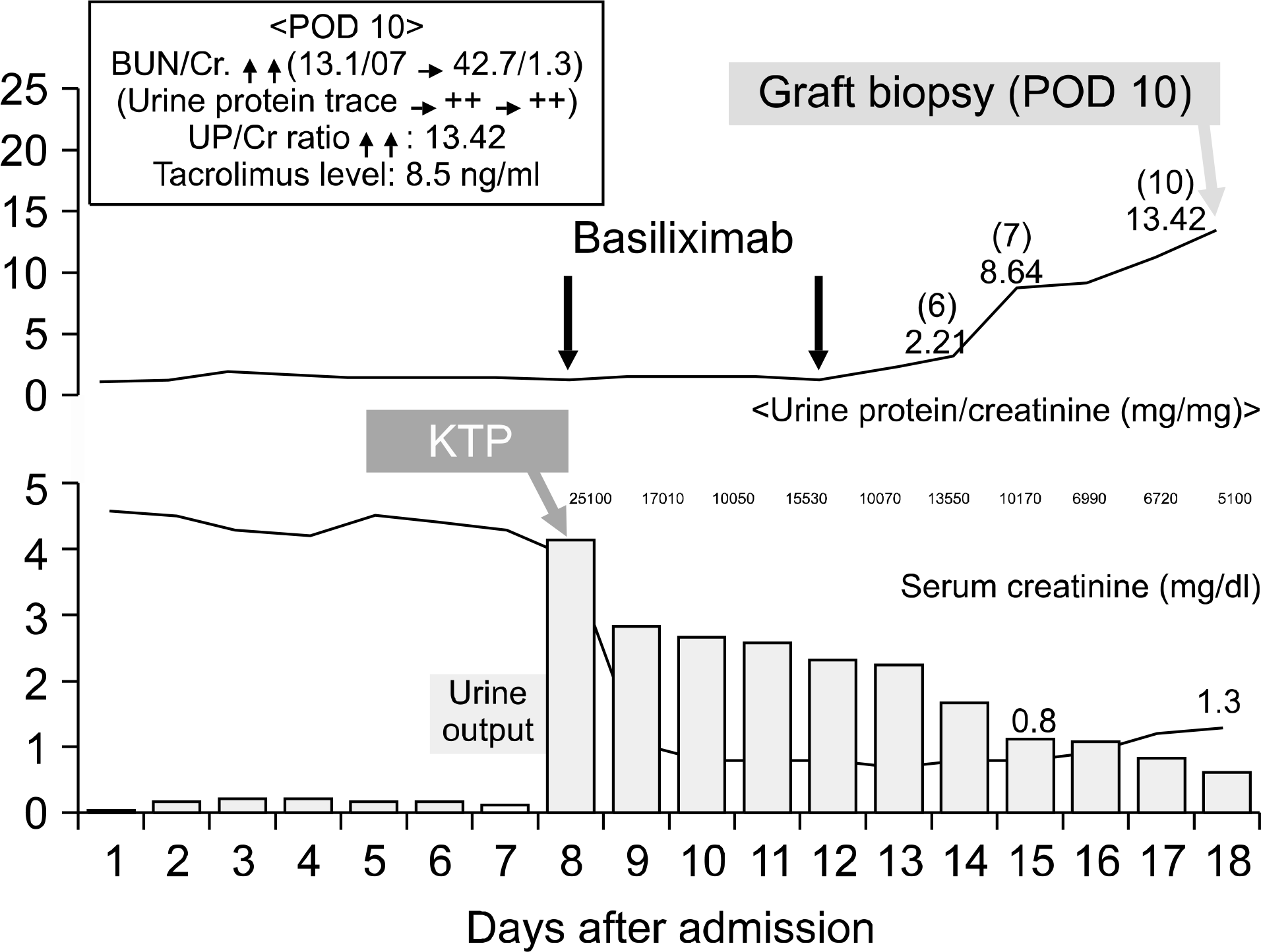 | Fig. 1.Clinical course 1. Abbreviations: POD, postoperative days; BUN, blood urea nitrogen; UP, urine protein; KTP, kidney transplantation. |
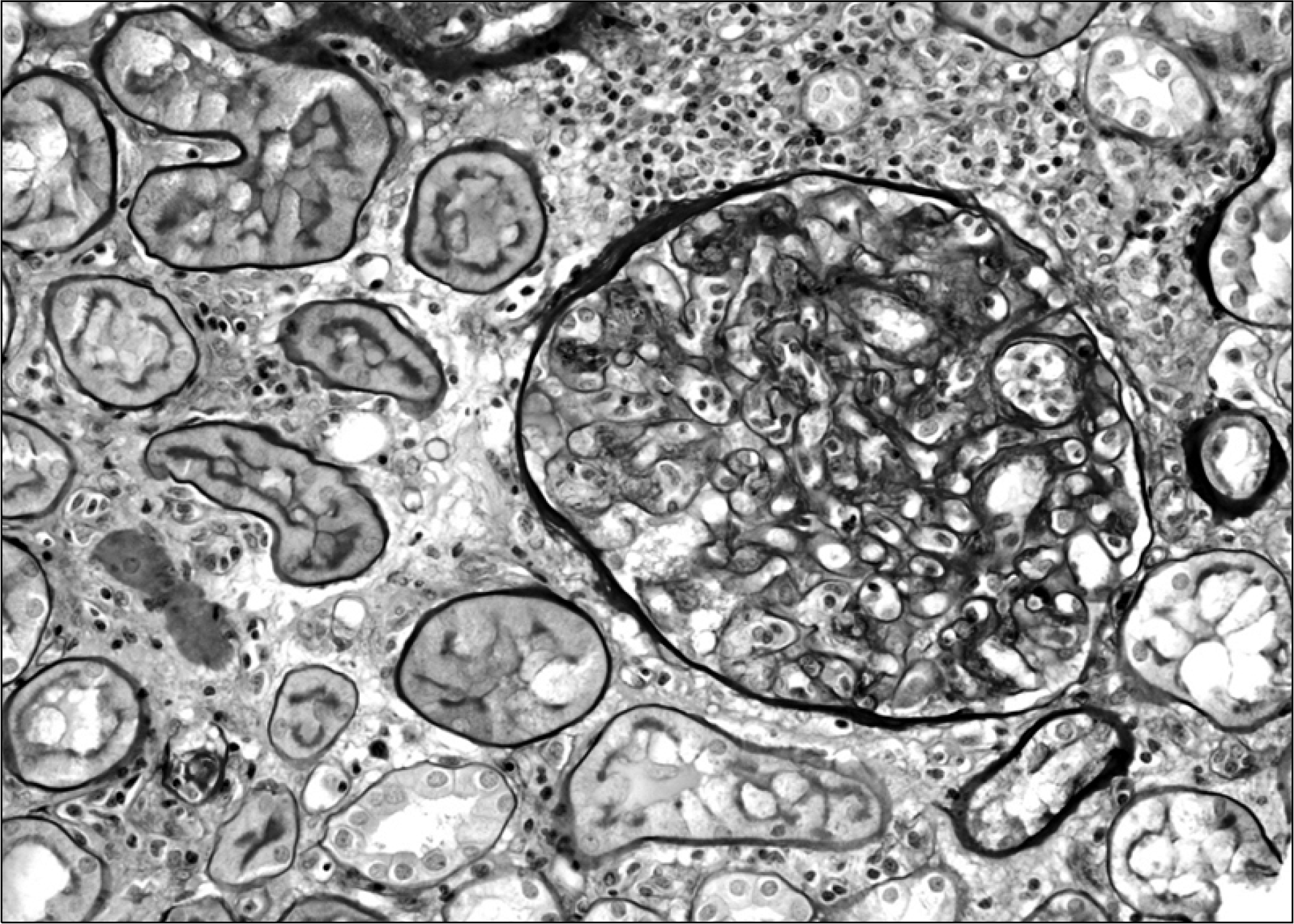 | Fig. 2.Light microscopically, lymphocytic infiltration in glomerular capillary lumina is seen. Lymphocytes infiltrate along the edematous interstitium. Lymphocytic tubulitis is not present. PAS, ×200. |
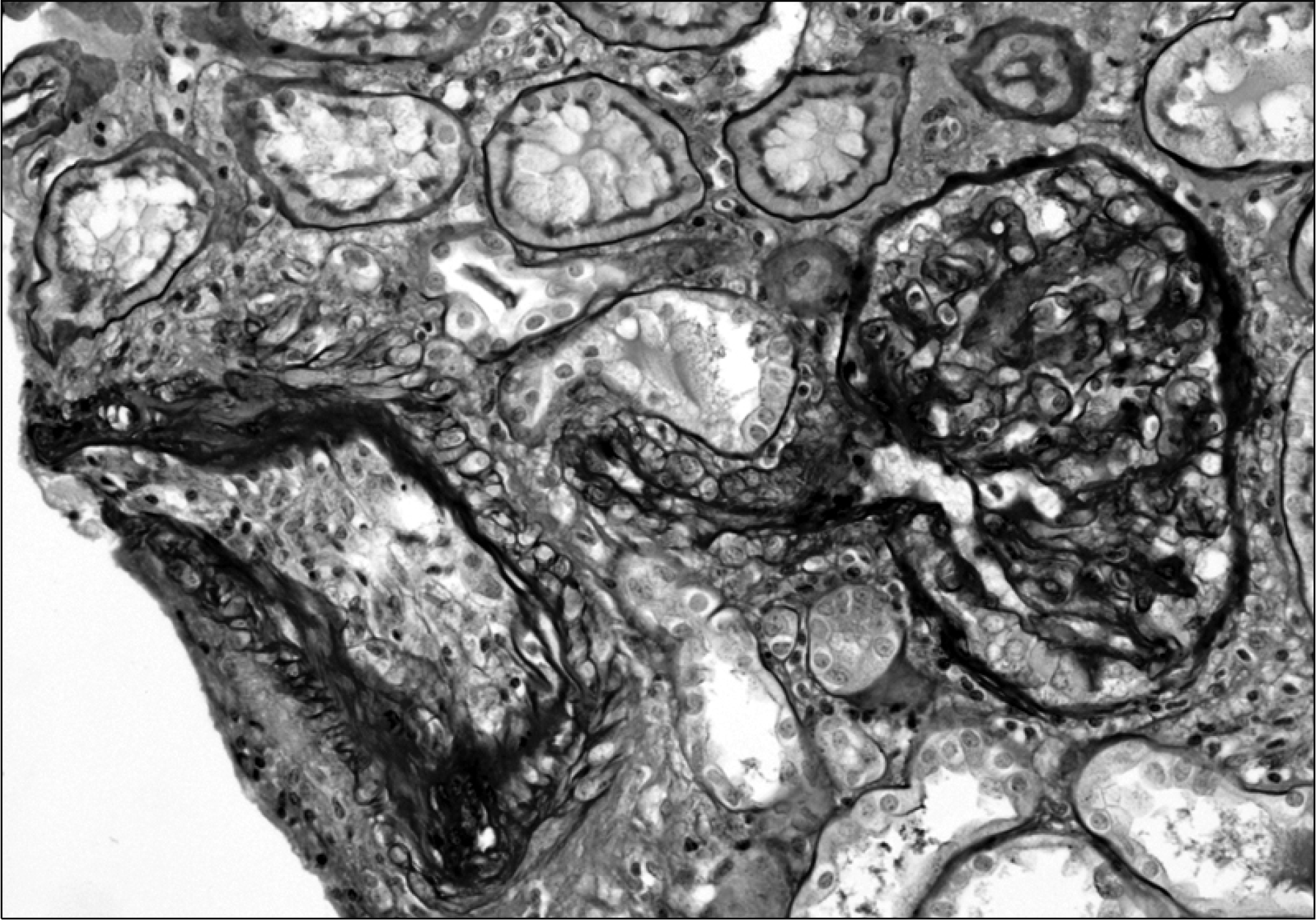 | Fig. 3.On left, medium sized artery has subendothelial lymphocytic infiltration. The glomerulus shows focal mild mesangial widening. PAS, ×200. |
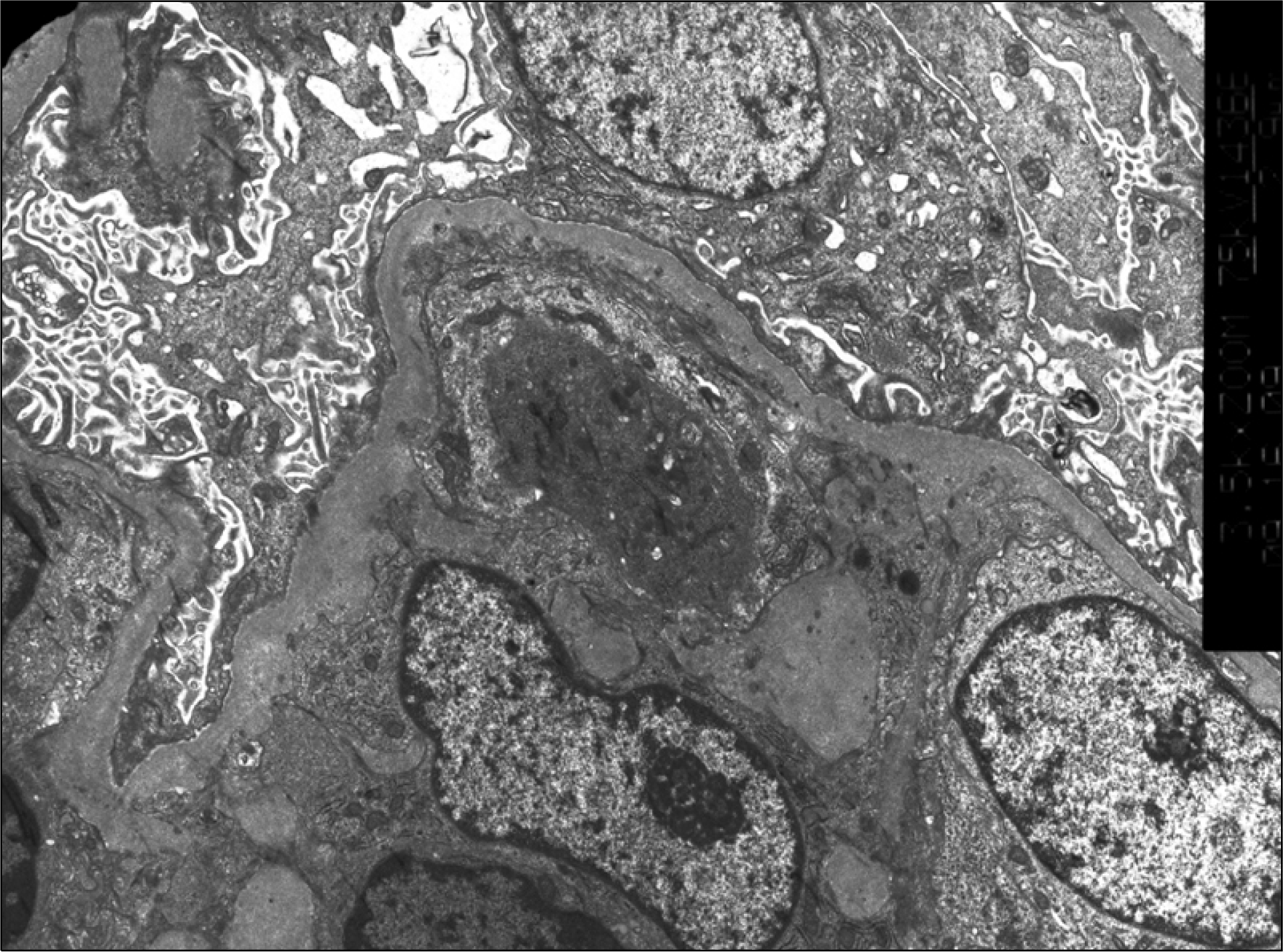 | Fig. 4.Electron microscopically, most foot processes are fused with microvilli formation. ×5,000. |




 PDF
PDF ePub
ePub Citation
Citation Print
Print


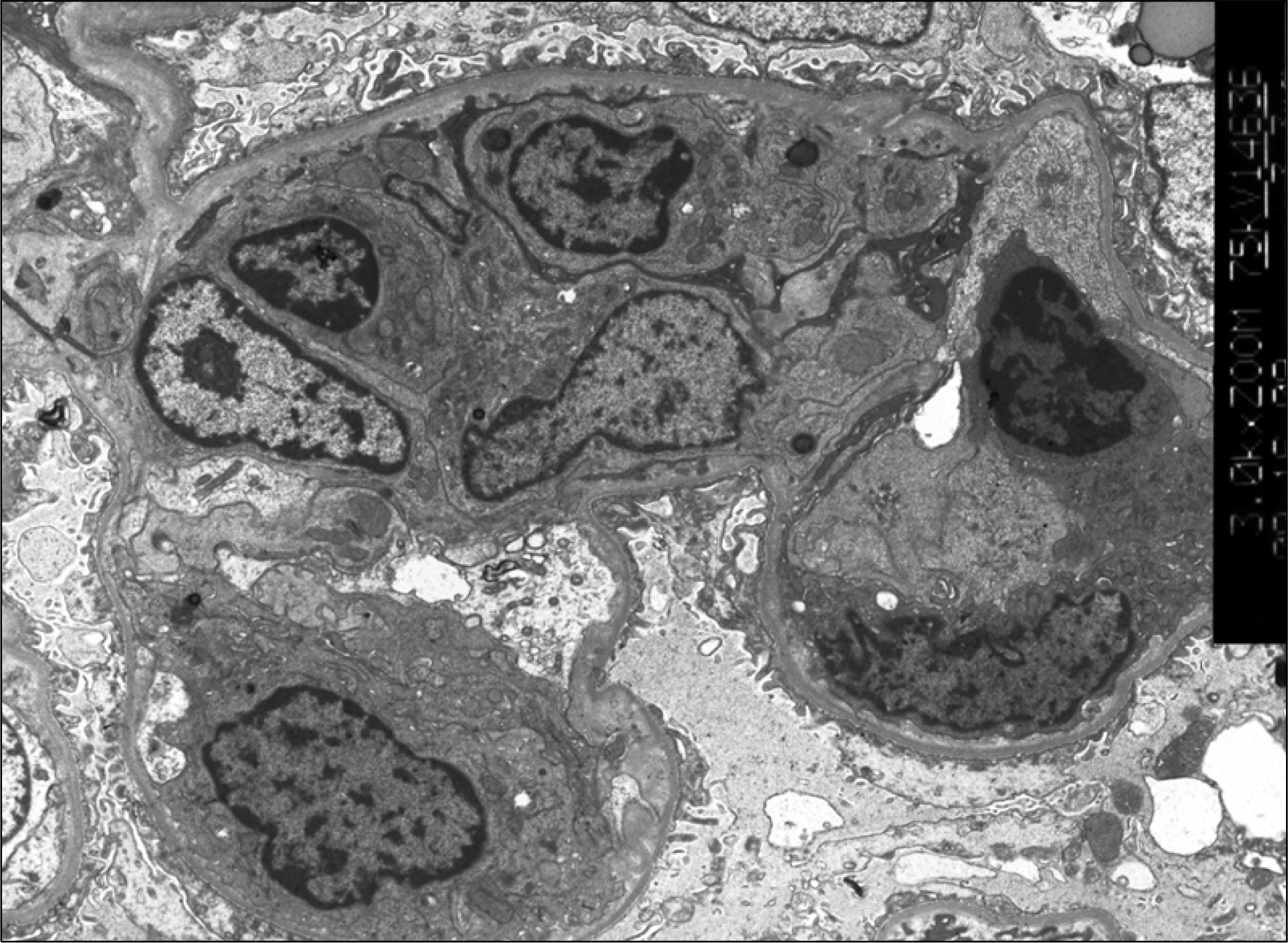
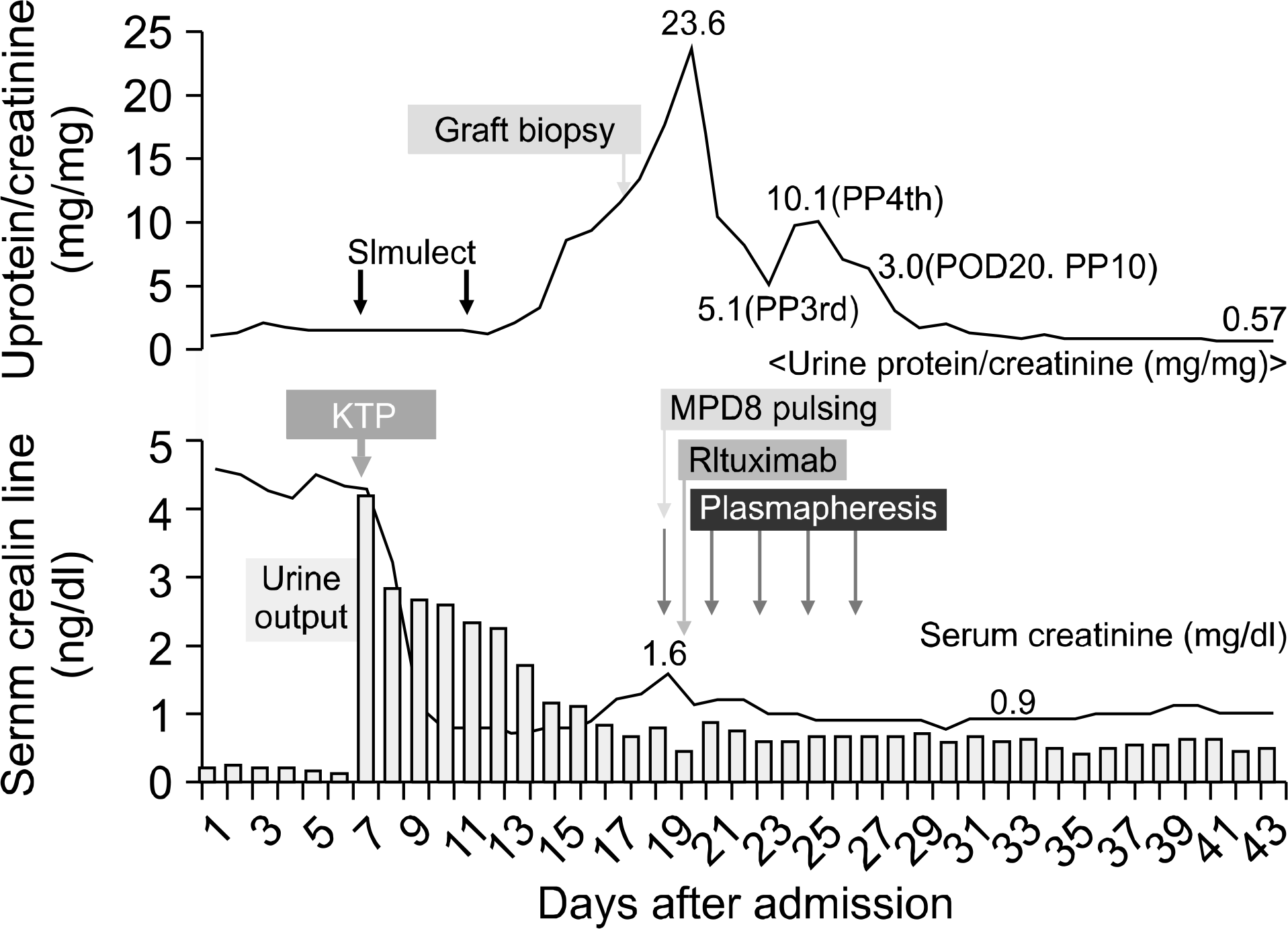
 XML Download
XML Download